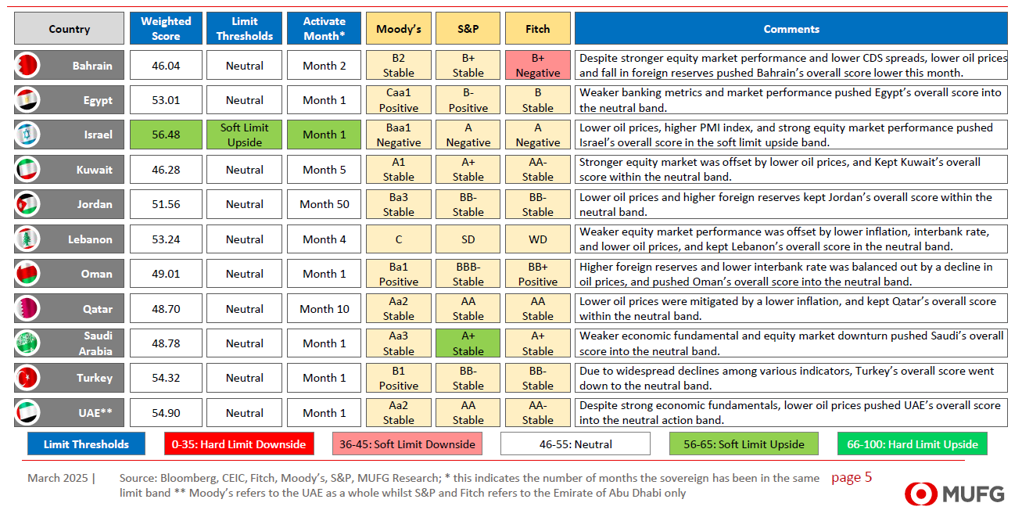To read the full report, please download the PDF above.
Middle East - Monthly Composite Activity Indicator (CAI)
EHSAN KHOMAN
Head of Commodities, ESG and
Emerging Markets Research –
EMEA
DIFC Branch – Dubai
T:+971 (4)387 5033
E: ehsan.khoman@ae.mufg.jp
SOOJIN KIM
Research Analyst
DIFC Branch – Dubai
T: +44(4)387 5031
E: soojin.kim@ae.mufg.jp
MUFG Bank, Ltd.
A member of MUFG, a global financial group
Monthly Composite Activity Indicator (CAI) – March 2025
We are pleased to share our latest iteration of our MUFG Composite Activity Index (CAIs) – which distils a plethora of market, economic, political, banking, and credit indicators into a single measure to track monthly activity growth in real time.
Summary measures of economic activity are usually only available with a long lag. As they incorporate data from many different sources, they are only as timely as the slowest indicator. With this, we have created a Composite Activity Indicator (CAI), defined as the “first principal component” of a host real activity metrics to track monthly activity growth in real time through a single measure. The goal is not to forecast GDP, but to present the CAI as a mechanism to offer visibility on the variation in real activity indicators, with the approach involving mapping each metric to a mechanism to derive an overall weighted score which will be monitored on a monthly basis.
Our initial population target is the Middle East hydrocarbon exporters and importers, with the aim of broadening this out to a wider subset of countries within EMEA to capture sequential changes in similar metrics into a single measure to track monthly activity growth in real time.
In March 2025, we highlight the following considerations:
- Overall message. Juxtaposed against today’s geopolitical uncertainty, major energy exporting countries CAIs moved down to the “neutral band” predominantly on lower energy prices though these countries pragmatism in balancing external uncertainties with inward-looking diversification strategies, remains resolute. Also, CAIs remain within the “neutral band” for energy importers.
- Israel. Pivot from the “neutral band” into the “soft limit upside band”.
- Iran. Pivot from the “soft limit downside band” to the “neutral band”.
- Egypt. Pivot from the “soft limit upside band” to the “neutral band”.
- Oman. Pivot from the “soft limit upside band” to the “neutral band”.
- Saudi Arabia. Pivot from the “soft limit upside band” to the “neutral band”.
- Turkey. Pivot from the “soft limit upside band” to the “neutral band”.
- UAE. Pivot from the “soft limit upside band” to the “neutral band”.
- S&P upgraded Saudi Arabia’s credit rating from A+ to A, with a stable outlook, citing “the institutional settings for Saudi Arabia have strengthened in the context of socioeconomic reforms and transformation under Vision 2030 and are now in line with most peers rated in the A category”. The rating is now on par with G20 members Japan and China, though it remains below Saudi’s own rating assessment by Moody’s.
- Fitch revised Bahrain’s credit outlook from stable to negative, citing “rising debt, persistent fiscal deficits, weak public finances, and high reliance on GCC support despite stable hydrocarbon revenues and gradual non-oil revenue growth.


